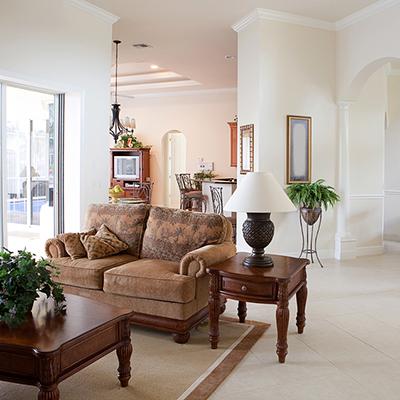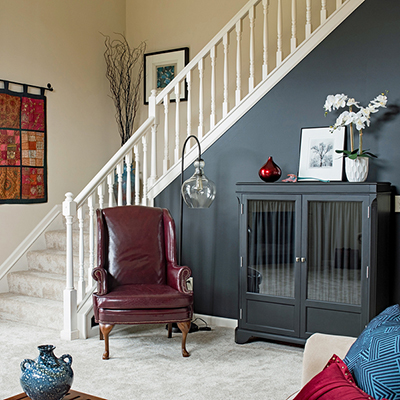
What is a neutral color?
We always think of neutrals as colors, but calling them colors is kind of a misnomer, because these shades really don’t make a distinct color statement. So, a neutral color is a color that isn’t a color. Now that that design concept is out of the way, we’ll talk about neutrals as both colors and shades.
Traditional neutral colors include black, white, taupe, beige and several others. Within each of these are off-shades such as gray, ivory, cream and tan. In paint schemes, neutral colors can be used as the primary colors in a room, or they can serve to accent bolder colors. Let’s look at both applications.
Neutrals as primary colors
Rooms painted predominantly with neutral shades are soft and relaxing without any big, bold statements. Remember, though, that’s just the paint. An all-neutral room would wash out if everything in the room was neutral. Take into account the colors of carpeting, area rugs, furniture, lighting, wall treatments and decorations when planning an all-neutral paint scheme.
If the amenities in a room are vibrant with color, as many are, neutral paint on the walls and trim will accent these amenities, making them more visible and alive. While neutrals are pretty easy to match with most heavier shades, you want to look around your room and get a feel for the color personality of everything in it and then find a neutral paint you feel creates the best blend.
An example of a primarily neutral paint scheme might be moderate gray on the walls, softer gray on baseboards and trim, and then a lustier charcoal-gray for the window frames. With this backdrop, any colors in the room will be more visible and sharp.
 Neutrals as accents
Neutrals as accents
If you prefer a more vivacious look to your walls and ceiling, by all means wash them with your favorite color(s). You may find, however, that too much color creates a blanketing effect, especially when you add in the colors of your room’s amenities. In this case, some neutral touches throughout the room can lighten the load.
Consider painting one entire wall in a neutral shade that blends with the other walls. Or use soft, neutral colors on all the trim work, which will break up the overwhelming attitude created by large sections of stronger paint. If you have furnishings that you know will be there for a while and contain neutral highlights, consider matching those neutrals in the neutral paint you use.
A final thought: remember that lighter colors lighten a room, and darker shades darken it. When planning your paint scheme, consider how much natural and interior light you’ll be putting on top of your major colors or shades in order to create the lighting experience you desire.
If it’s time to repaint and you prefer a professional touch, Franklin Painting of Farmington, CT, can create the perfect color backdrop for every room in your home. We’re color specialists and paint experts. Give us a call at (877) 646-7774, and tell us what you want to accomplish.

Frank Campanelli, the esteemed founder of Franklin Painting LLC, has been leading the company since 1986. He takes immense pride in the stellar reputation his dedicated team has built by consistently delivering top-notch service to each customer.


